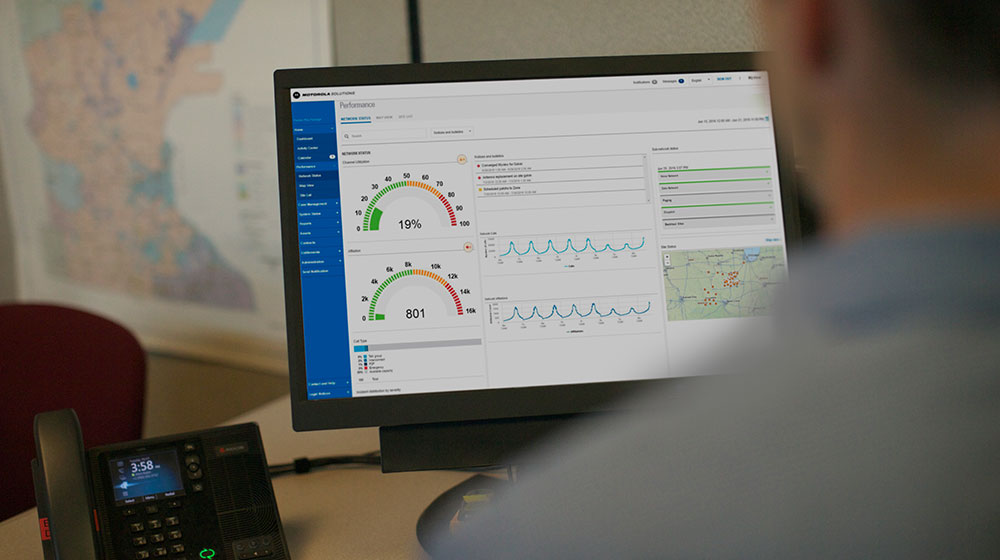What is different as a result of the FFC Report and Order?
In January, the FCC adopted a Report and Order. The order requires all Commercial Mobile Radio Service (CMRS) providers (aka wireless carriers) to implement location-based routing within their respective networks nationwide for wireless calls and real-time text (RTT) communications to 911 call centers. We have been receiving a lot of questions from 911 agencies regarding what the order requires and how it will impact their day-to-day operations. We have attempted to answer many of these questions below.
What does the FCC location-based routing order mean for CMRS providers, (aka wireless carriers)?
It means there is a requirement for wireless carriers, CMRS providers, to deploy and utilize location-based routing within their respective networks for 911 requests for service that their subscribers make, to determine which call routing service provider to send the call to. When a 911 call is placed, the CMRS providers have a responsibility to deliver those calls to the authoritative jurisdictional call routing service provider.
Historically, wireless carriers have utilized cell sector ids to determine which 911 call routing service provider to deliver the call to. The benefit of this order is the potential for the CMRS providers to more accurately and consistently route the 911 call to the correct 911 call routing service provider, which should help reduce secondary call transfers based upon the location of the 911 caller.
How does the FCC location-based routing change what is provided by the CMRS providers, (aka wireless carriers)?
The order does not change the data or format of how wireless carriers, CMRS providers, hand the call to the 911 call routing service provider. In fact, nothing changes about the interaction between the wireless carrier and the 911 call routing service provider. The only difference is how the call is routed (using location-based routing) within the CMRS providers network as they determine which 911 call routing service provider they deliver the call to.
Based on the order, the OSPs will now be required to use the technology of their choice to determine the location of the caller and compare it against jurisdictional 911 call routing service provider geographic boundary data. They will then route the call to the associated 911 call routing service provider based on where the caller’s location falls on the map, in relation to the 911 call routing provider boundaries.
What is the timeline for implementing the FCC location-based routing order?
The order gives nationwide CMRS providers six months and non-nationwide CMRS providers 24 months to implement location-based routing. For RTT communications to 911, the order requires all CMRS providers to implement location-based routing within 24 months.
Will the FCC location-based routing order improve the accuracy of the location used by the CMRS providers to determine which 911 call routing provider to route the call to?
No. The FCC’s location-based routing order does not specifically address the accuracy of the location used by the CMRS providers to make routing decisions nor the methods used by the CMRS providers to calculate the 911 caller’s location. It is important to keep in mind that, until this specific FCC order, CMRS providers have not been required to use the caller’s location in any way related to the routing of 911 calls.
Will the FCC location-based routing order change or improve the caller’s location data the CMRS provides, (aka wireless carriers), to 911 call routing service providers during 911 calls?
No. The order does not speak to or set forth any requirements for CMRS providers to change the location they share with 911 call routing service providers during live 911 calls nor the format in which they share location with 911 call routing service providers.
Does the FCC location-based order require CMRS providers to deploy or otherwise comply with NENA Next Generation 911 standards?
No, the order does not speak to nor require CMRS providers to implement any NENA standards-based functionality or features. It should be noted that NENA i3 standards do not specifically recommend or require that CMRS providers deploy or utilize location-based routing within their networks.
However, with the Order, CMRS providers that have not already deployed location-based routing within their networks may choose to make other improvements as part of their location-based routing migration. These improvements may result in the CMRS providers providing more accurate location and/or evolving the capabilities to transition from Time Division Multiplexing (TDM) to Session Initiation Protocol (SIP) call handoff to 911 call routing service providers, as well as remitting calls in NENA standards based formats.
Does the order change the call routing process for the Originating Service Providers (OSPs) and NG Core Service (NGCS) providers?
No. The order only establishes location-based routing requirements for CMRS providers, not OSPs and NG Core Service (NGCS) providers. The order requires the CMRS providers to utilize location-based routing in their respective networks for 911 to determine which NGCS provider, like Motorola Solutions, to send the call to. For the NGCS provider, location-based routing is also a primary consideration as part of the call routing within NGCS (Next Generation Core Services) but is a completely separate process. Each form of location-based routing can operate without the other. Whether an OSP uses location-based routing in an area that is operating a legacy call routing service or an NGCS call routing service, nothing changes once the call is delivered to that authoritative call routing service provider.
Does the order apply to wireline or fixed Voice over IP (VoIP) Originating Service Providers (OSPs)?
No. The order applies to CMRS providers only and specifically excludes wireline and fixed VoIP OSPs from being required to utilize location-based routing within their respective networks.
Check out the Report and Order.
Download the whitepaper for more information on delivering location with the call.
For more information on Motorola Solutions call routing service visit us at www.motorolasolutions.com/callrouting.




